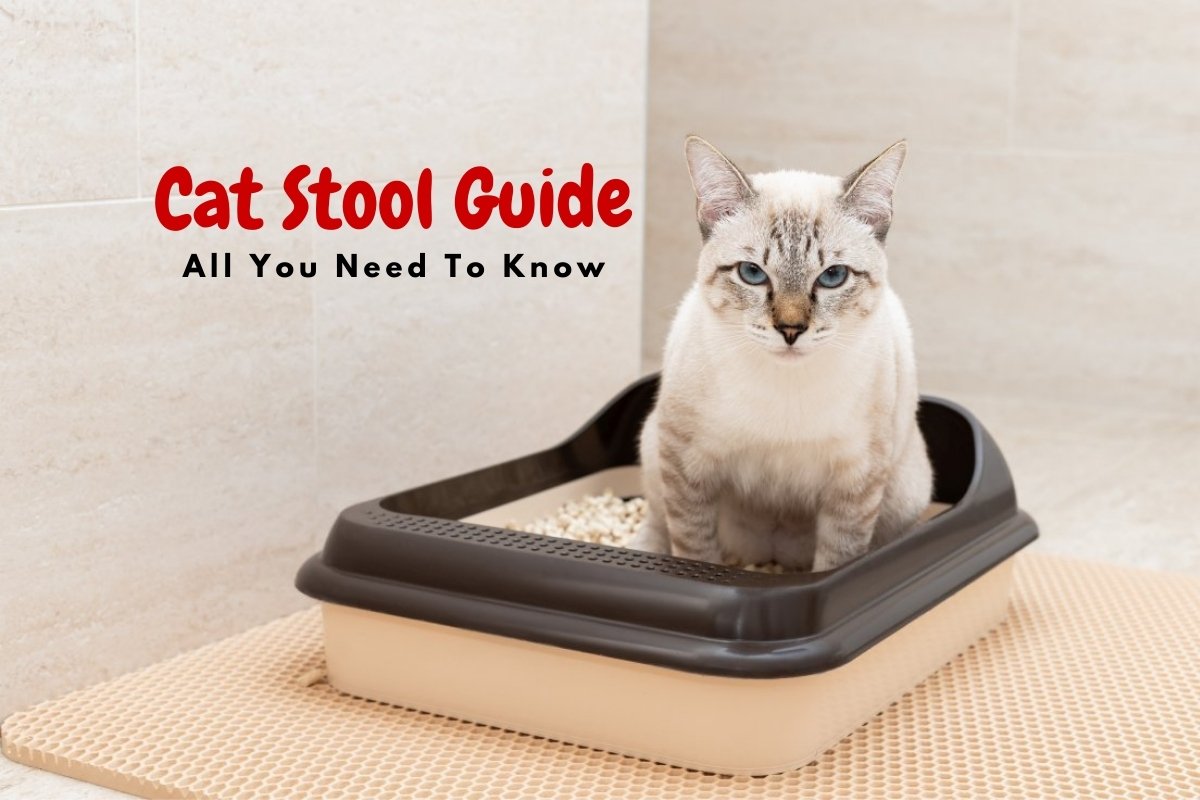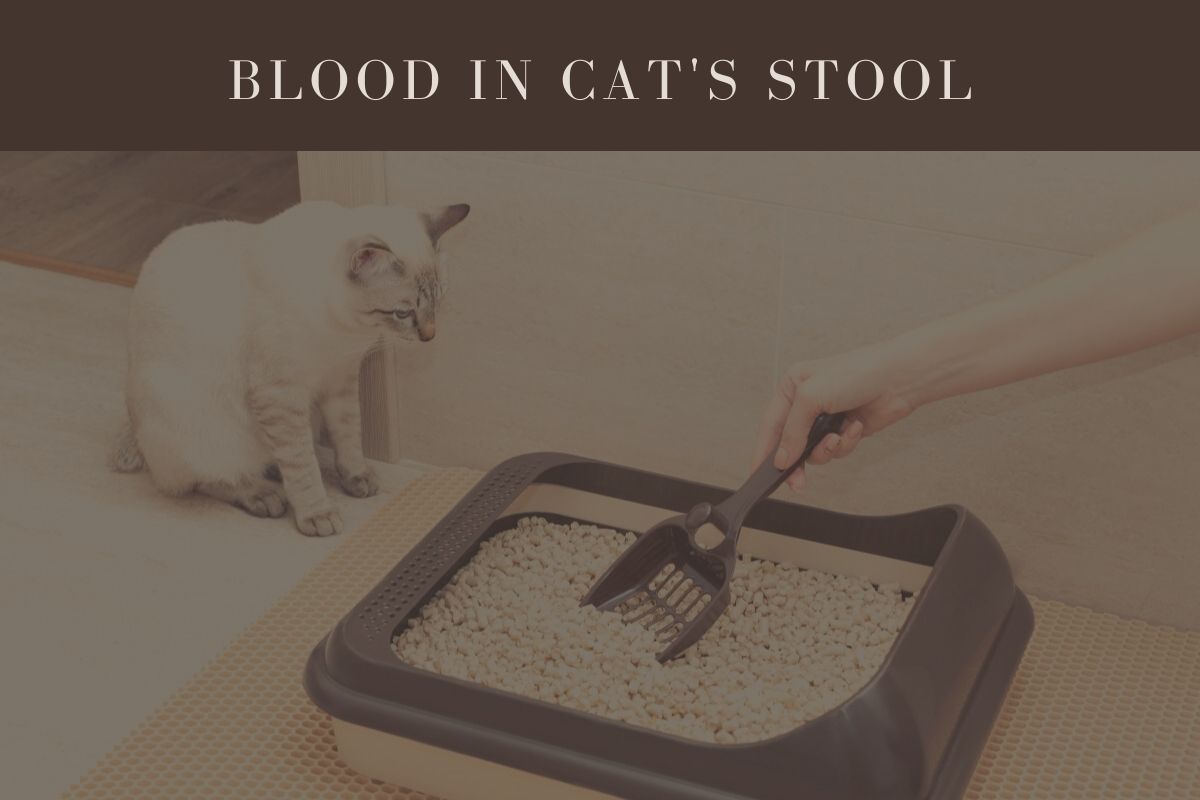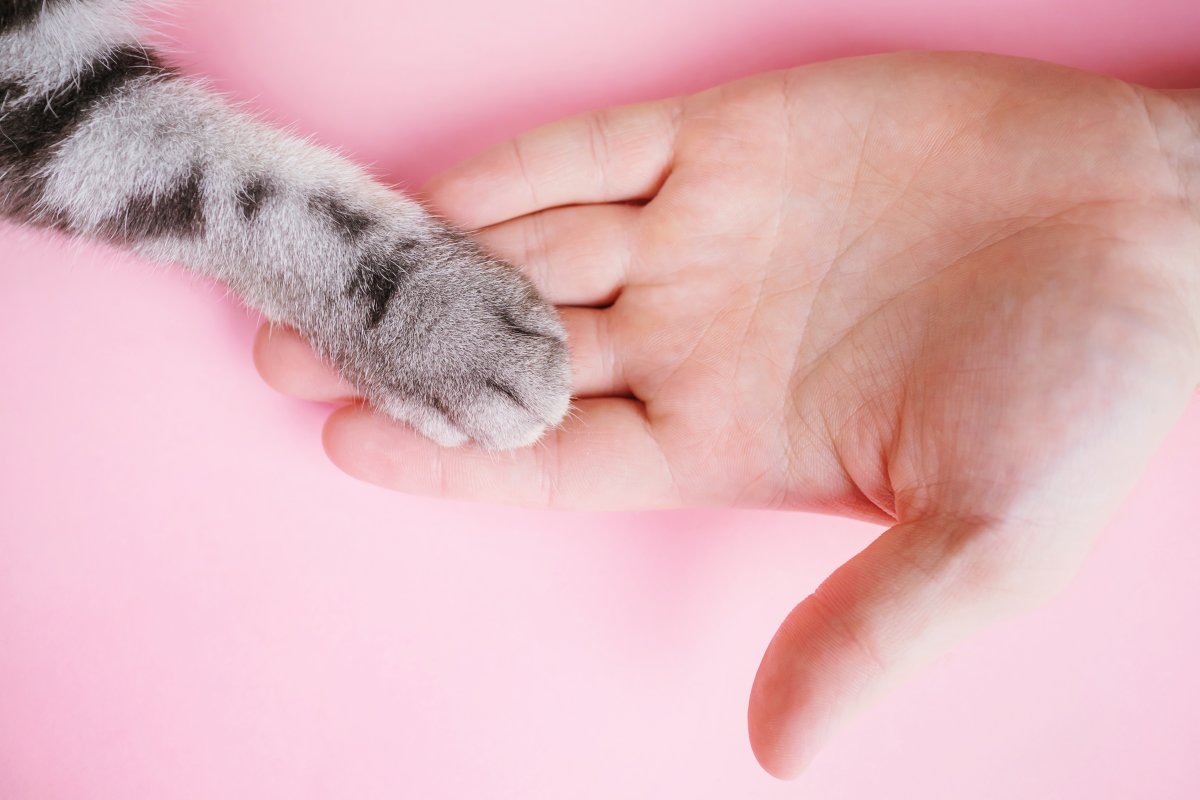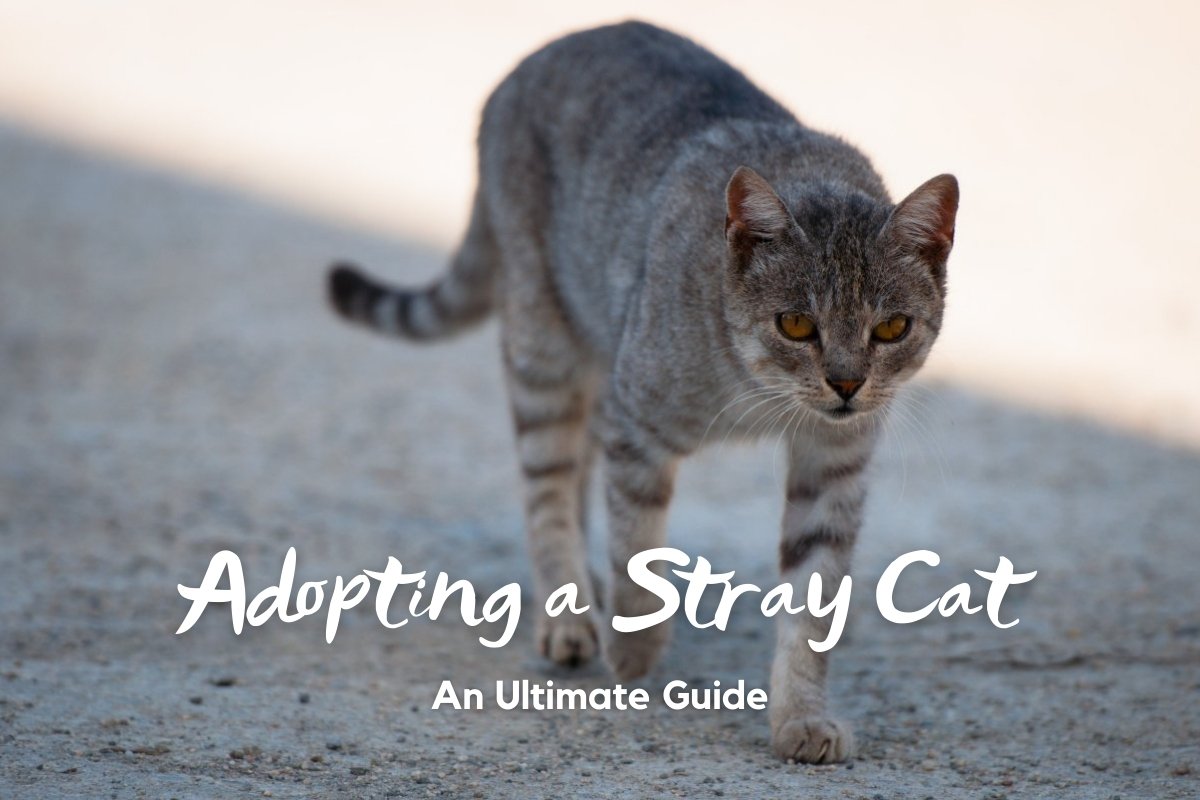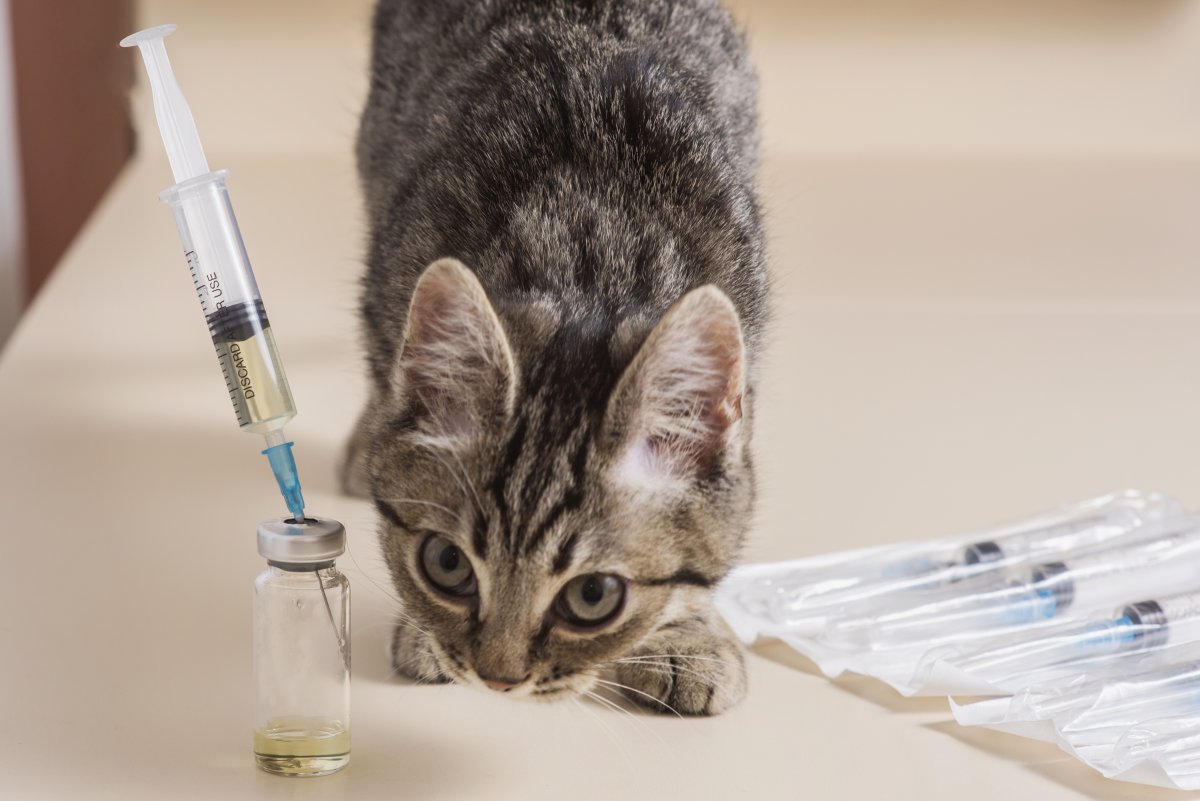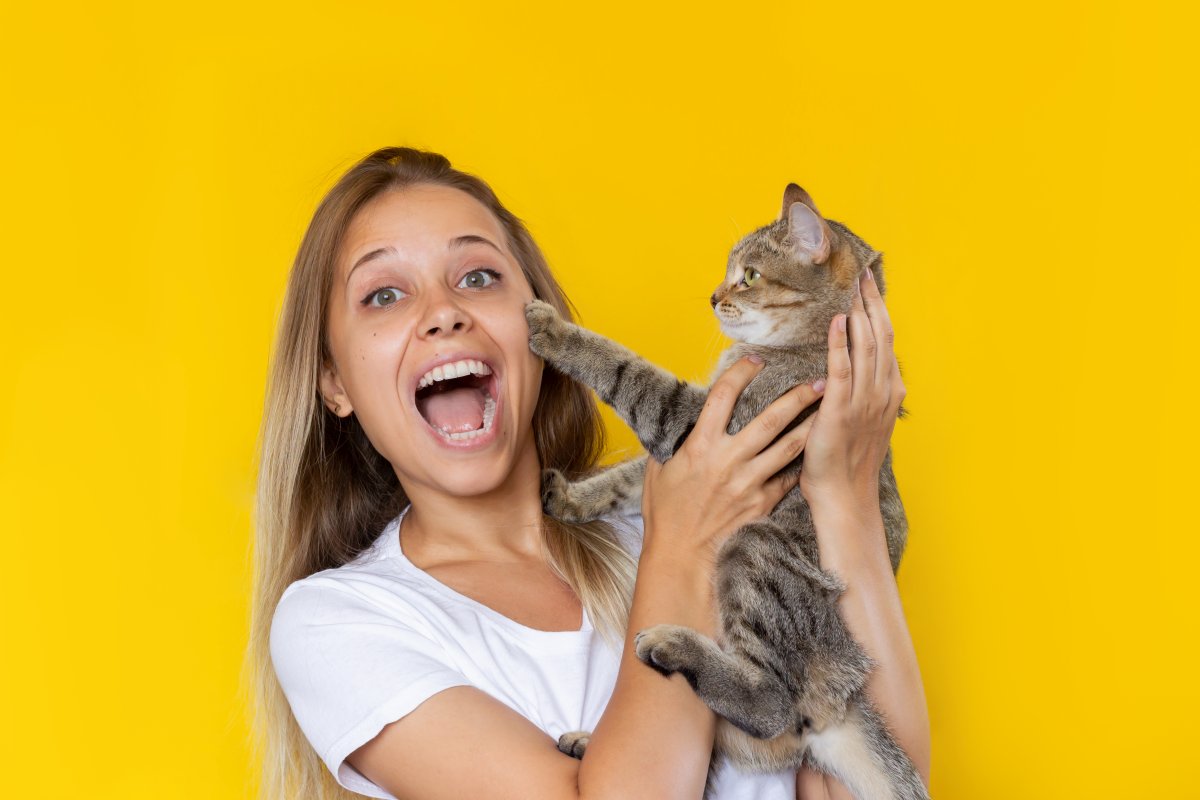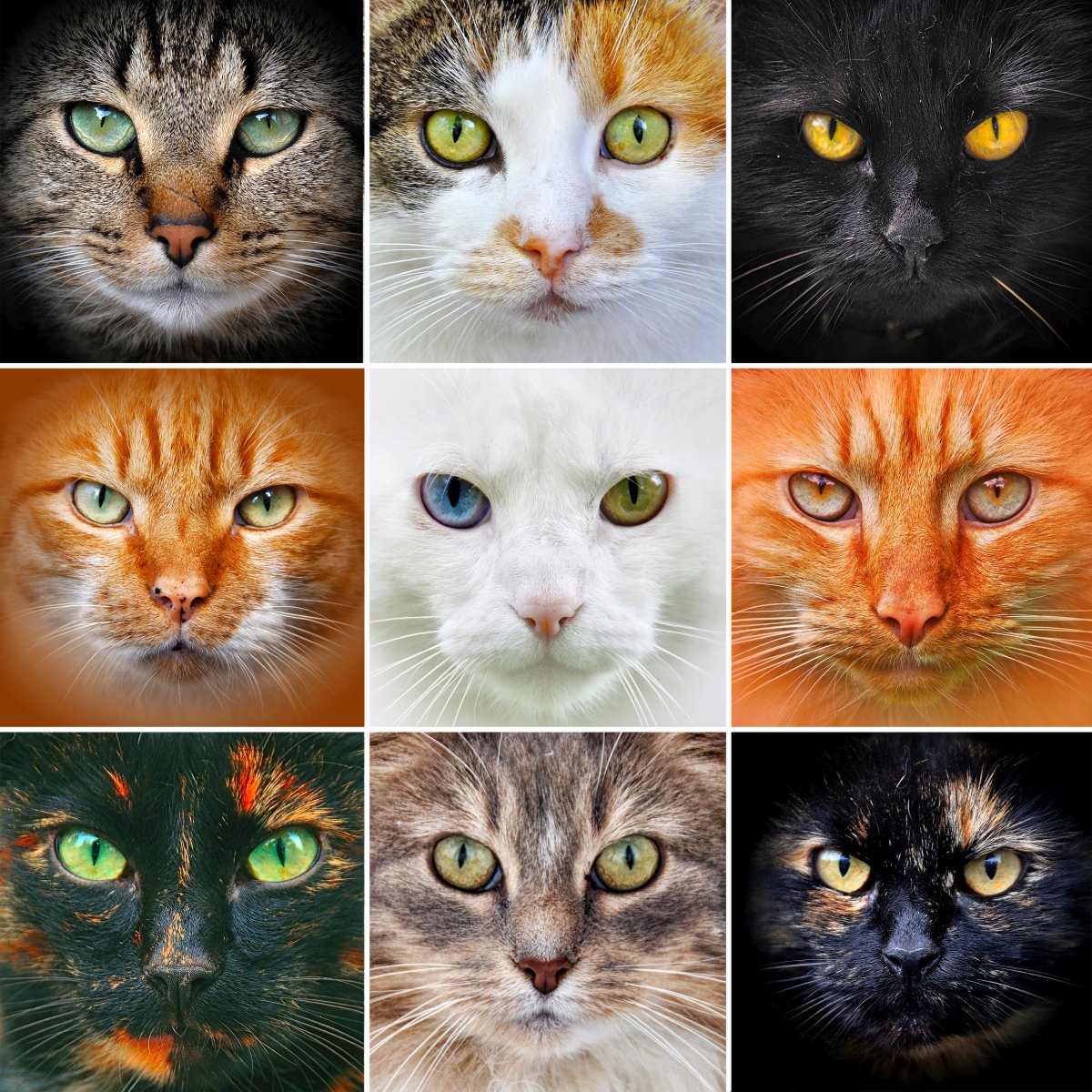Someone who adopts a cat or has a pet cat should always ensure they provide the best care and treatment to those little fur babies. It is important to take care of cats and make sure you know about the basic things.
It is essential to look for an indication that might suggest a health issue. This indicator isn’t very pleasant, but it is necessary. Make sure you check the cat’s stool because it could indicate any possibility of a health issue.
Through this article, you’ll understand how important it is to check your cat’s stool and recognize which texture means what.
How Can Cat Stool Indicate Any Health Issues?
A stool is something that can give direct insights into the cat’s colonic health. You can recognize many things through the stool, like whether your cat is eating properly or not or drinking enough water. Hence, next time you check the litter box, make sure you check the stool.
What Type Of Cat Stool Indicates Normal Health?
It is important to know that most cats poop at least one time a day. If the stool is healthy, it should be deep brown and not feel too hard or too mushy. The smell from it shouldn’t be too foul, but a normal level of stink is expected.
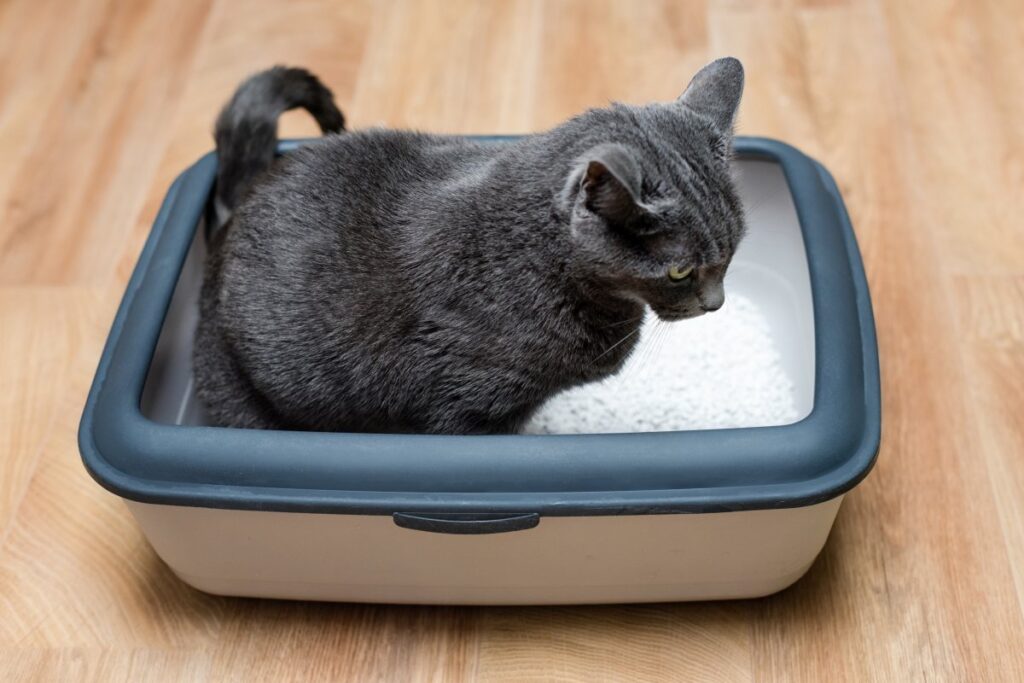
Diarrhea in Cats
Diarrhea is pretty common in cats, and there are many reasons why a cat might have it. It isn’t a very serious issue, but it is important to check how frequent it can be. Usually, it might just come and go quickly, and other times it might last for a week or even for a whole month.
Common causes of cat diarrhea
Some of the common things which lead to diarrhea in cats are allergies or intolerances towards certain types of diet or food. It can also be due to inflammatory bowel diseases or even worms, i.e., intestinal parasites. Moreover, colitis, cancer, pancreatic diseases, and hyperthyroidism can also lead to extensive diarrhea.
What to do when the symptoms of diarrhea indicate major health issues
Just in case your cat has been facing diarrhea for a few days, make sure you take it to a vet to understand the reason behind it. It is important to contact the vet as soon as possible, especially if the diarrhea is black or bloody. Diarrhea, along with a fever, vomiting, and loss of appetite, and sluggishness, also calls for consulting the vet right away.
Treatment for diarrhea
In case of diarrhea, make sure your cat gets the necessary treatment suggested by the vet. However, make sure you know the exact cause first. There will be times when the vet recommends a few prescription medications to help control the cat’s inflammation.
A special diet might also be recommended, so make sure you make your cat follow that.
Prevention of diarrhea
Make sure you don’t give your cat a lot of dairy products like yogurt or even milk. This will help prevent diarrhea, as cats can’t properly digest dairy products. If you switch the brand of the food you give your cat, make sure to give it in small amounts so that the cat’s body can get used to eating a different product. If you don’t do that, it can lead to indigestion, and then eventually, diarrhea.
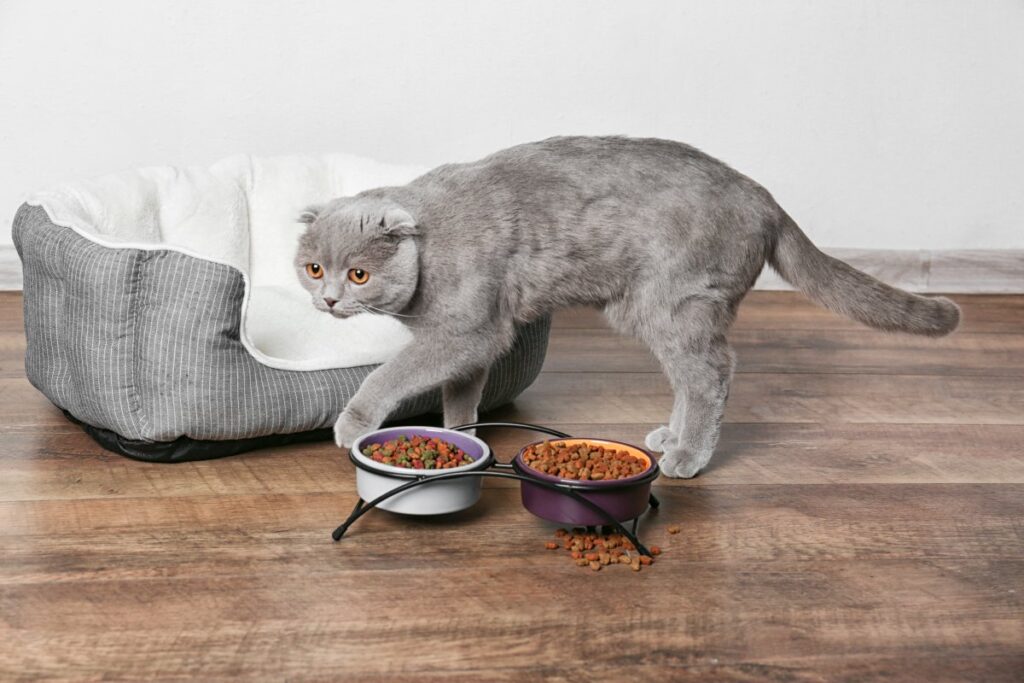
Constipation in cats
Cats can face constipation as well, and it is important to know the type of stool they pass during it. During constipation, cats will pass hard and dry stool. Mostly, if they are struggling to pass stool, it would indicate constipation.
This experience is uncomfortable for cats, but it is essential to understand the symptoms and causes. You should always make sure you give them proper nutrition and help them move on with this issue, and at the same time avoid things that could give them constipation.
Causes of constipation in cats
One of the causes of constipation in cats is the cat hair built up in their digestive tract, which will block the passage of healthy waste. Another cause can be dehydration. To make sure a cat doesn’t get constipation anymore, make sure that you feed your cat the type of food made to combat the hairball control and provide your cat with enough nutrients to help with digestion.
Moreover, to avoid dehydration, make sure to increase the cat’s water intake and include wet cat food in the regular diet. This way, you would be helping it overcome dehydration and eliminate constipation.
Symptoms of constipation
Constipation is basically when the stools are infrequent and difficult to pass because of are hard. A lot of cats face this issue when they are dehydrated as well. You might know they are constipated because most cats pass stool again after every 24-36 hours. If your cat isn’t passing stool frequently or in between this time frame, make sure that you get it checked, as it might be constipated.
However, it can be more of an issue if your cat doesn’t pass stool within 48-72 hours without any bowel movement. This is an indication to contact the vet.
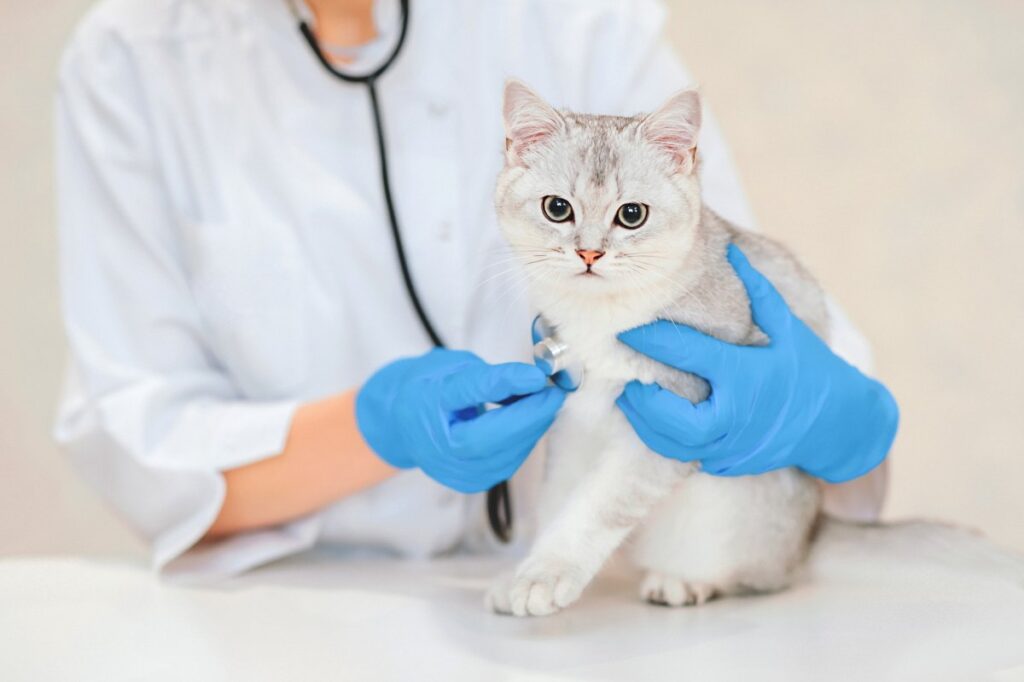
The main signs of cats facing constipation are dry and hard stools being passed inside or outside the litter box. Usually, the stool has a brown color, and it looks well-formed, as it is a healthy stool that isn’t caused due to dehydration or blockage. Cats with constipation are likely to pass on very dry and hard stools. They can be in extreme discomfort during this period.
Another symptom of constipation in cats is restraining from going near the litter box, crying in front of it, and avoiding it. Cats tend to vocalize their discomfort through mainly straining and not going into the litter box.
If you see any discomfort from your cat in using the litter box and not passing stool, it is a major sign of constipation. It might mean that the cat has urinary tract issues. In this case, a vet needs to be contacted.
Constipation can also be a symptom of other issues in the cat as well
These other issues that can cause constipation in a cat include being nauseous, decreased appetite, drinking more water, drinking less water, weight loss, loss of muscle, walking stiffly, hiding, difficulty in jumping, and vomiting. If you see these symptoms, it means you should discuss them with the vet.
Other serious causes of constipation
According to many vets, anything that causes dehydration in a cat automatically results in constipation. Most issues can be treated at home and taken lightly, but others can become serious if you don’t give proper attention to your cat.
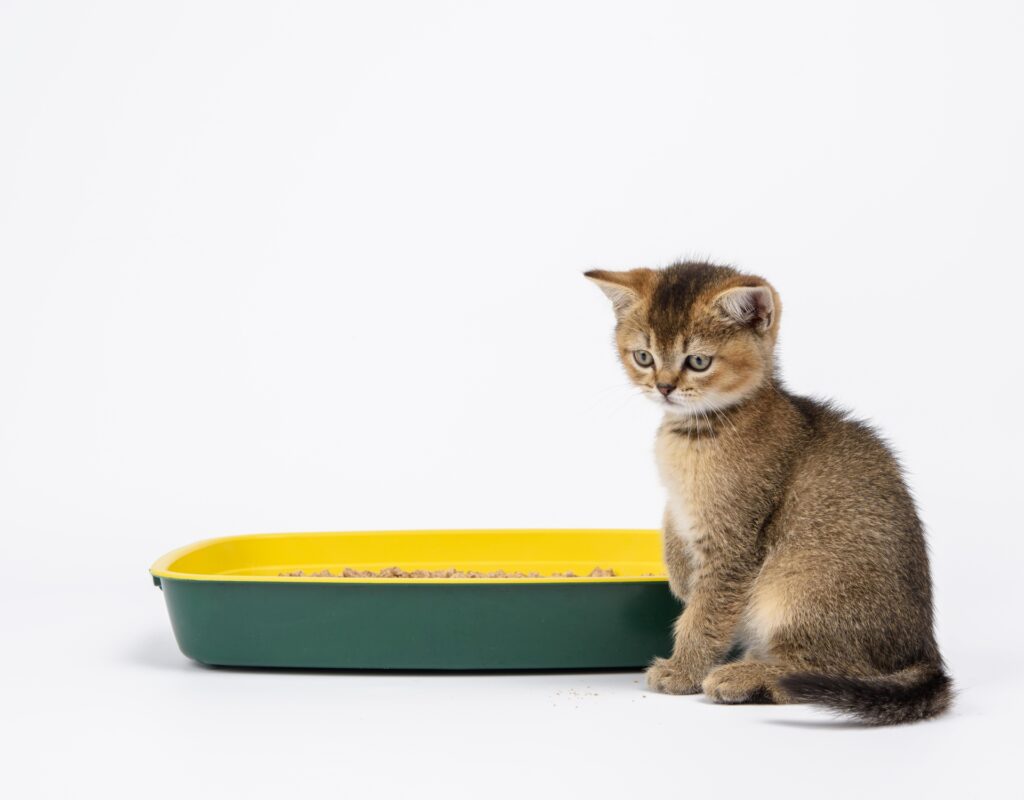
Constipation in cats is mainly caused when the intestines fail to move things along normally. When things aren’t moving normally, the stool gets hard and dry.
This can be caused due to stress, inflammation, anxiety, nerve problems, bowel diseases, and sometimes even cancer. Other chronic diseases like kidney disease, diabetes, and hyperthyroidism can also lead to constipation. This causes pain as well.
Familiarizing yourself with the types of stool
If you are a cat parent and have a cat pet or a kitten, you might be used to cleaning out the litter box. This isn’t the best activity in the world and might not be fun, but make sure you pay extra attention to your cat’s stool because it can indicate many things. To familiarize yourself with the types of stools and what each indicates, make sure you consult your doctor and read the stool chart.
If your cat passes stool at least once a day, it indicates that the cat is in good health. It is important to familiarize yourself with the types of stool so you will know what to do in case of a ‘bad’ stool. Here are a few lists of questions that all cat parents have, and they are answered to help you through this process.
What is the appearance of normal cat stool?
Normal cat stool is actually of a deep brown or a standard brown color, and it should be well-formed. There should be no streaks of mucus in it or no blood. This is what a healthy cat stool looks like.
How can you tell if cat stool is healthy?
You can do this by constantly monitoring the stool that your cat passes and knowing how many times it has passed stool in 2-3 days. Make sure you know how it looks and its consistency, as it will help you understand your cat’s health.
How much stool does a cat usually pass in one day?
There aren’t any set rules for how often cats pass stool; however, most cats generally tend to pass stool once or twice every day. This indicates the good health of the cat. The length of the stool can be four to around six inches.
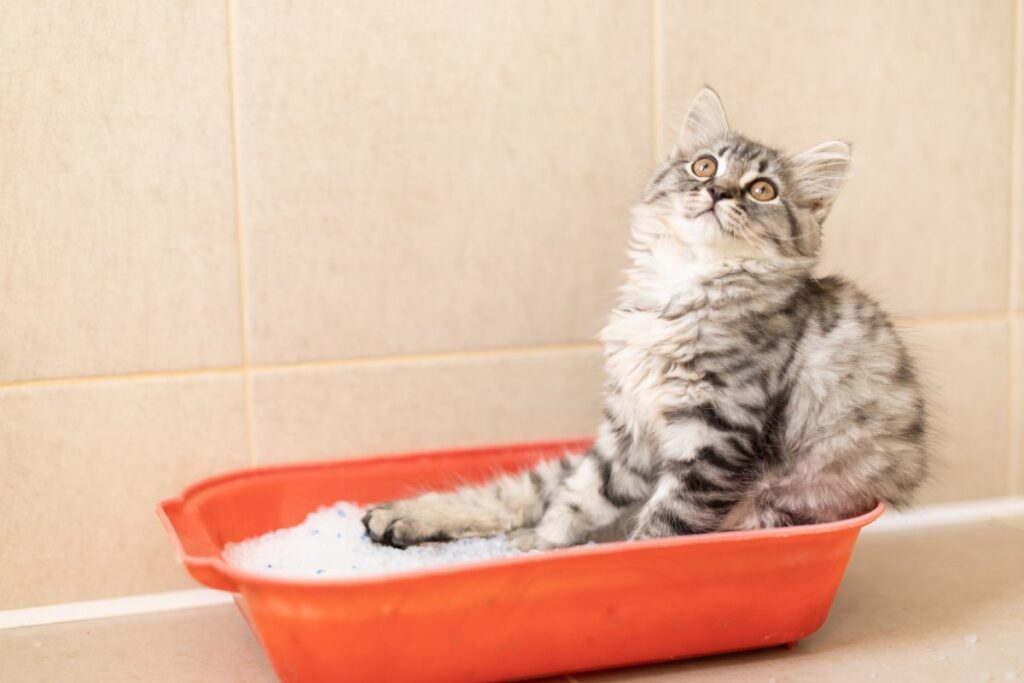
The texture of the stool indicates that the cat is healthy
If your cat is in good condition, it means that you are feeding it right, and its diet is good for its age. The diet should be matching the activity level of the cat along with its breed as well. If you are looking after these minute details, it means that your cat will be producing healthy stools.
The perfect cat stools will not be too runny, but they won’t be too dry either. They will be shaped long, and you’ll see that they are firm but still soft. It has the consistency of playdough.
These stools will be comfortable for the cat to pass, and it won’t try to resist the litter box.
How to feed your cat the right diet and food
Your cat needs to have a regular, complete, and balanced diet. Make sure you formulate it according to your cat’s breed, its physical activities, and its age as well. Ensure whether your cat is happy or unhappy, and see the consistency of its stools frequently. Once you start keeping a record of this, you’ll be able to maintain a perfect diet for your cat, which will make sure your cat doesn’t face any health issues and passes on a normal and healthy stool.
Healthy vs. Unhealthy cat stools
If you compare healthy stool with unhealthy one, you’ll see that it tends to be malleable, as it is not too soft or not too hard either. It’s shaped in the form of an uncooked sausage and is about a little less hard than that. If your cat is passing this type of stool, it is considered healthy. However, make sure that the healthy stool isn’t too dark. Black stool can indicate blood in the stool. Black stool is an unhealthy stool, as it has blood in it, and too light stool means a chance of liver disease. This can indicate obstruction of a bile duct.
If your cat has passed out small and hard balls of stool, it is considered an unhealthy stool, indicating constipation. Hence, this is a serious issue. There are metabolic and neurological concerns and conditions or chances of colon obstruction.
Moreover, make sure you look out for soft and liquid-like stool, which means the cat has bacterial infections. This is cat diarrhea, as explained in the article before. You have to check closely, as liquid stool can be mistaken for urine. Hence it is essential to understand cat stools.
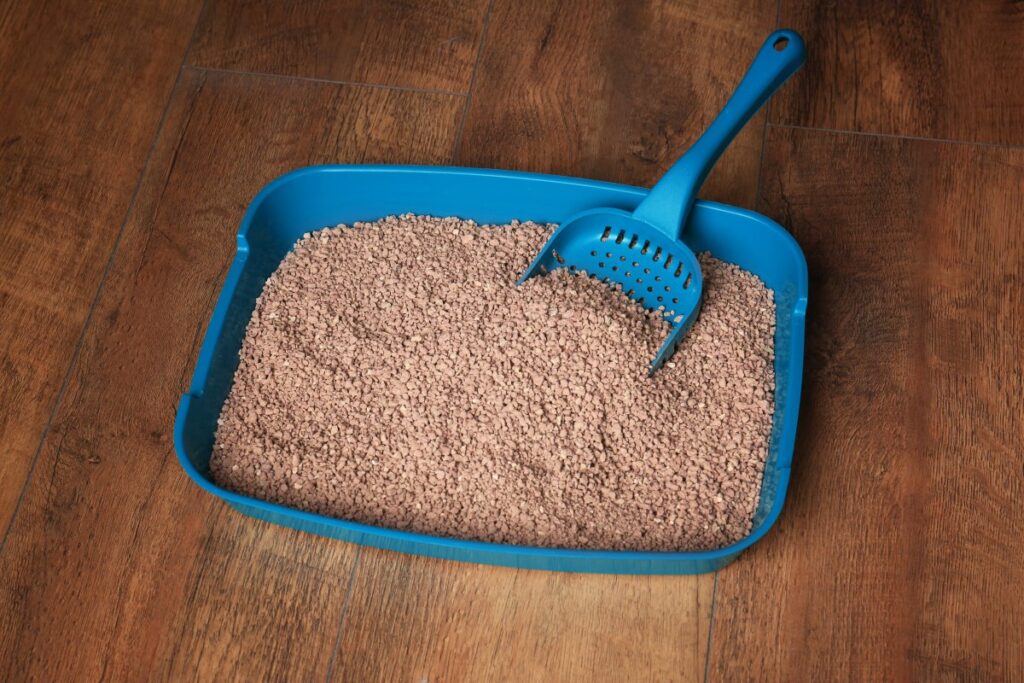
Preparing samples of cat stool
Whenever you visit the vet to get your cat checked, your vet might ask you for stool samples to test it in a lab related to the fecal matter. It is best to prepare the stool samples beforehand and start observing the cat’s stool a week before so that the vet can understand the differences in each of them.
Make sure your samples are pre-prepared and are collected into approved plastic containers before your appointment with your vet.
These containers are available almost anywhere, and you can purchase them online or at any pet supply store. The lab mostly needs a fresh sample, so make sure you make arrangements to get the most accurate results.
Once you put the stool sample into a plastic container, make sure you refrigerate it and jot down the date and time of the collection so that the vet has legit information and can gain accurate results from the lab testings.
If you have a lot of cats, make sure you get all of them checked multiple times
If you are a cat parent of more than one cat, it means that you would have to prepare everything for the vet accordingly. You would have to prepare the sample accordingly and make sure that you know about each cat’s stool condition yourself, and jot down their behavior individually.
It is better to keep a separate litter box for each cat so you can jot down the behavior and the types of stool for a specific period. You should know that your cat stool can tell you a lot about its well-being and health, and when you have a lot of cats, it can be hard to keep a check, but it’s something you have to do.
Make sure you have time to incorporate a stool check and litter box maintenance routine into your daily life, as it is a priority to keep your cats healthy.
Importance of using a cat stool chart
This is an important part of maintaining your cat’s health and keeping a check on its stool. Your cat’s stool is one of the main indicators of its health, and a healthy cat is supposed to have healthy stools.
There are a lot of health issues that a cat faces, like constipation and diarrhea, and each issue can be identified from its stool. Keeping a cat stool chart, in this case, is essential to know the progress of your cat’s health and understand the issues it is facing. In the cat stool chart, make sure you describe the cat’s health in particular and more information about the gastrointestinal tract as well.
Breakdown of the cat stool health indicator according to its color and consistency
It isn’t that easy to keep a check on your cat’s bowel movements all the time, especially if the cat is an outdoor pet. However, if you use a litter box, make sure you check on it, as it is an advantage. You can scoop up the sample into a plastic container for the vet and jot down the details you observe.
As you already know, a cat’s stool should be normal brown or a dark tone of brown, which will indicate that the stool is healthy and the cat is in good health. The main idea is that the stool should be of a reasonable consistency and well-formed.
There shouldn’t be any sign of blood or mucus, and fecal scoring should be based on the cat’s poop look. It is important to understand that the fecal abnormalities might even point to various issues that have a major effect on the digestive tract and beyond.
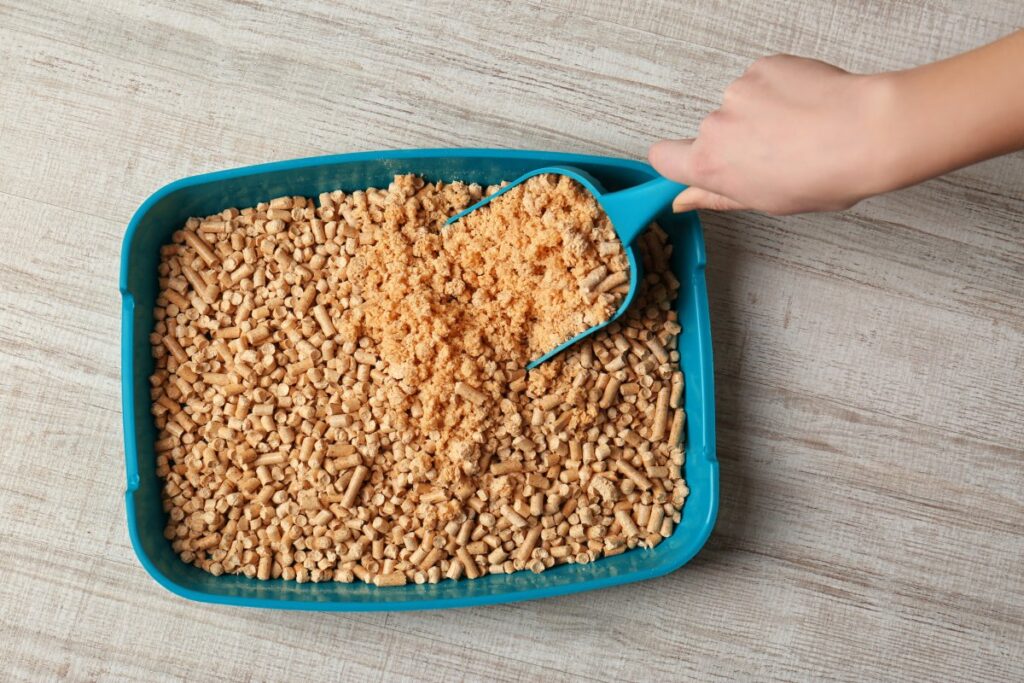
Abnormalities in the stool that should be noted
The major abnormality in the stools that should be noted is extraneous matter. This extraneous matter mostly includes hairballs. If the stool is soft, i.e., formed a bit mushy, it means it can cause a simple sudden change of diet. More changes might lead to mild or any early cases of diseases which might include causing diarrhea as well.
Another abnormality that is seen in stools is loose feces, i.e., basically diarrhea. This can be caused by many factors, like intestinal irritation as well as bacterial infections as well. Moreover, kidney disease, liver disease, other inflammatory bowel diseases, and food tolerances can also lead to this.
Two types of cat diarrhea
The first type of cat diarrhea is the one that is small intestinal diarrhea, which tends to have a larger pool of stools, which aren’t passed frequently. In this, blood is mostly present, and the stool might be darker. This type of stool is described as tarry, as it has been digested and is passed through the digestive tract.
The second type of diarrhea is the large intestinal diarrhea, which is associated with colitis. In this, smaller amounts of stool that are loose are passed, but more frequently. In this, there might be streaks of mucus and blood as well.
If there is a hard stool, you might want to note it down, as it is the opposite of diarrhea and is mostly passed because of constipation.
If you notice that your cat is over-grooming itself while passing stool, it can suggest that it is in discomfort or has abdominal pain, which calls for a checkup.
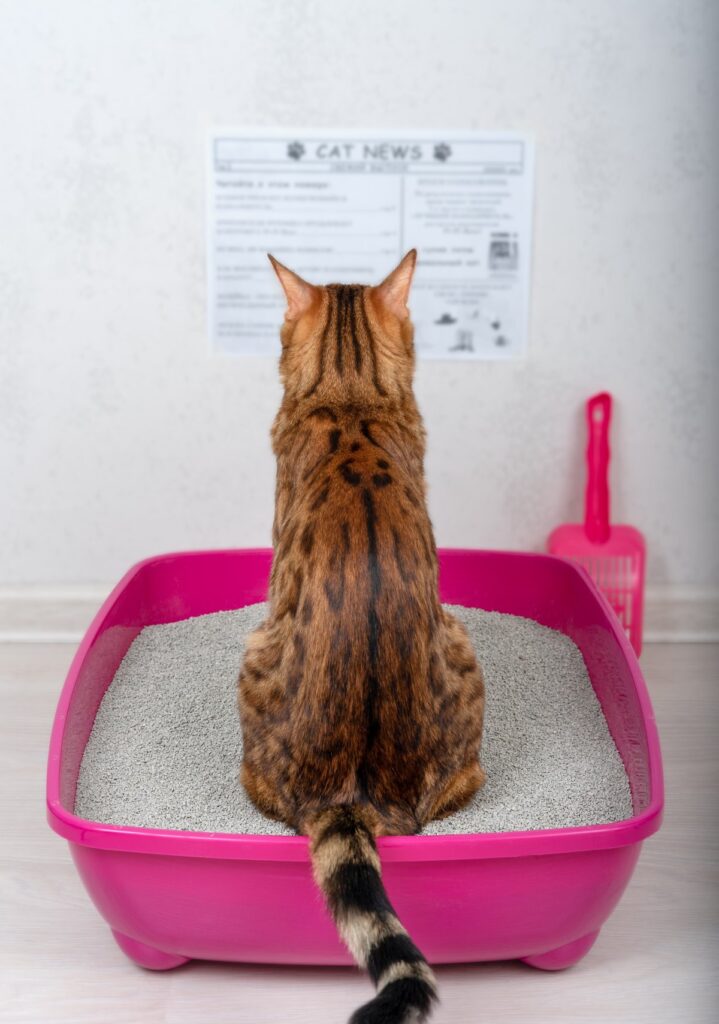
Types of stool and what they indicate
- Brown
The brown stool indicates normal stool, which means no action needs to be taken.
- Mucous clear
This is a slightly yellow or white-colored stool, which indicates bowel irritation or possibilities of parasites. This is something that calls for getting a checkup.
- Bloody red
This is the type of stool in which red blood is seen, which indicates irritation at the anus or rectum of the cat. This also indicates bowel irritation, viral or bacterial infection.
- Black
This stool is called a tarry, which means there might be the presence of large gelatinous clots. There might be some bleeding in the GI tract, and in this case, a vet should be consulted immediately.
- Orange
This color of stool might indicate that the liver or gallbladder has some issues.
- Yellow
This stool might have an extremely foul smell and may indicate the possibility of coccidian. This might also indicate bacterial overgrowth or imbalance.
- Greenish
This stool color means a severe bacterial infection, and the cat needs to be treated.
- Gray
This stool indicates that you have been over-feeding the cat, and there is a lack of probiotics and bile. In this case, you should reduce the intake of food for the cat and add more probiotics.
- White
This stool indicates major bacterial imbalance and a lack of flora. This is a life-threatening issue; make sure you take the cat to the vet every other day and give it probiotics.
What is the normal amount of stool that a cat should pass in one day?
Generally, the normal amount a cat should pass in a day is at least once a day. Two indicates good health as well. However, the amount of times your cat might pass stool depends on a lot of factors like:
Age
Generally, a newborn kitten tends to pass stool more than an older cat. Moreover, when it comes to cats of quite an age, they also tend to skip a day to pass stool.
Diet
The cat’s diet greatly affects the amount of stool they pass. A cat usually fed lower quality food tends to pass stool much more frequently than those fed higher quality and healthy food. This is because most healthy food is filled with nutrients which helps eliminate all the unhealthiness in the body.
Water intake
If you feed your cat a proper amount of food along with keeping it hydrated, they are less likely to face constipation and are more likely to pass healthy stool in healthy amounts.
Exercise
If you have an active cat, it is more likely to have a consistent schedule of passing stool.
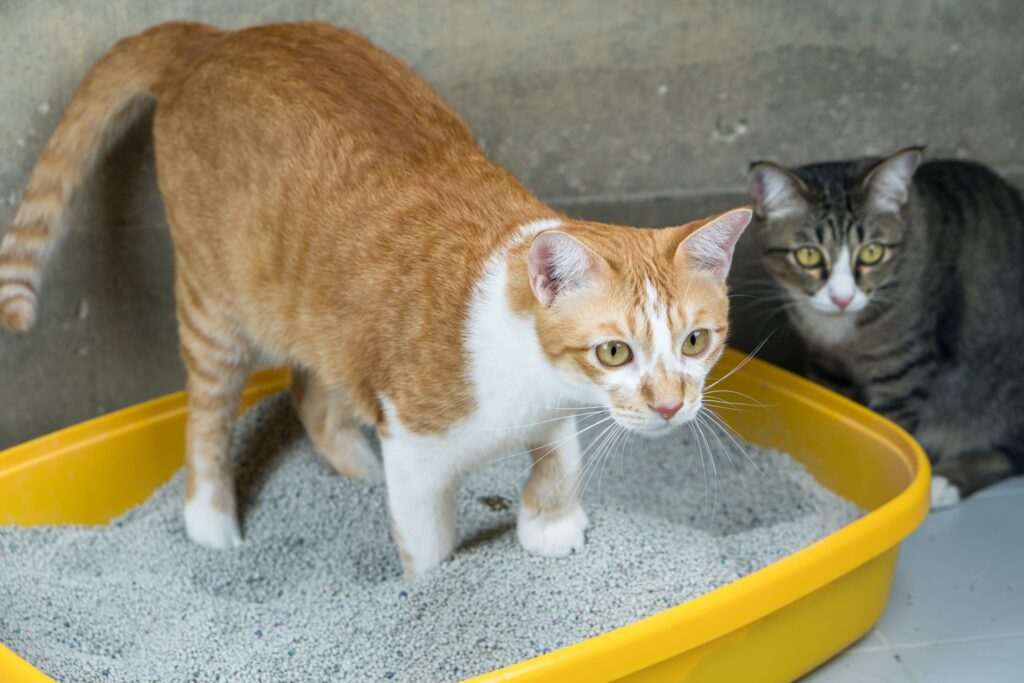
What should be the color of the stool if you’re maintaining your cat’s diet and health?
The stool, in this case, should be dark brown, and it can also be various shades of dark brown instead of just one typical color. It shouldn’t be black or tan, though, as that might indicate issues. If the stool is black and looks shiny like road tar, you need to check the cat. In case of tan or light brown, make sure you get the cat checked because it can indicate liver issues and pancreatic issues; however, the diet can also cause this. If you are feeding food high in fiber might produce a light-colored stool.
What does runny stool indicate?
The runny stool isn’t a very good sign. It means that the cat has some chronic diarrhea, which might be a symptom of a serious problem like hyperthyroidism, cancer, IBD, or pancreatitis.
How should a normal cat stool smell?
Normal cat poop isn’t going to smell good, but it will not be as stinky as unhealthy ones. The normal and healthy one is supposed to be mildly smelly, but not as much as the other ones.
If you haven’t changed your cat diet in any way, but its stool starts to smell a lot, make sure you contact the vet. Sudden changes in the smell and consistency mean you should contact the vet and consult with him.
How to deal with fur in the cat stool?
A little fur in the cat stool is pretty normal, but if you start seeing clumps of fur and a lot of hairballs, it means that you should speak to the vet, as that indicates a call for help, as your cat might be over-grooming itself.
The weird texture of the stool
If you see that your cat has a weird textured stool, more like rice looking stool, it might indicate tapeworms. In this case, make sure you scoop up the stool sample to show it to your vet so he can help you through the process and help give your cat an appropriate medicine for it.
Normal consistency of the stool
The normal consistency of the stool should be just the right sort of firm but shouldn’t be too hard. It should be somewhere in between very hard and very runny. It should be firm enough not to leave any residue behind, but also not so firm that it seems rock type.
Situations that indicate that you need to consult your vet
Whenever you spot blood or mucus in the stool, contact your vet. If your cat’s diarrhea lasts for more than two days, it is a clear indication of a problem, and make sure you consult the vet in this case as well. Indicating a string-like texture or dental floss in the stool, temperament change in the stool and your cat being constipated for more than two days also means you should get it checked ASAP.
Moreover, make sure your cat continues to pass stool inside the litter box, and if not, that is also an indication that there might be something wrong. Hairballs in the stool or wormlike textures call for consulting the vet and keeping a check on the cat’s stool for a week straight.
Finally!
This article has explained all the possible problems you might see in the cat stool and what you need to do to make sure you get it treated properly. First of all, make sure you form a stool chart as it will help you know how much your cat’s stool has improved or gotten worse. You should know how to identify the cat stool through its color and consistency to treat it in case of any emergency.

